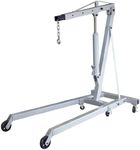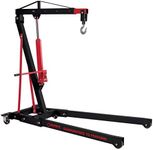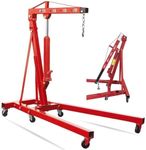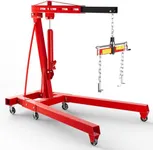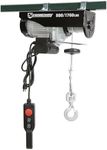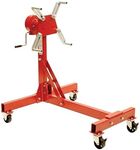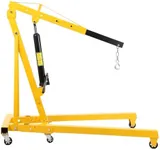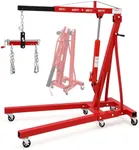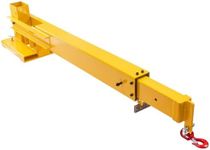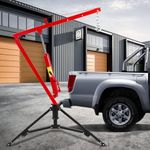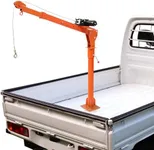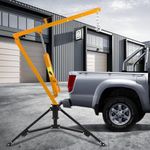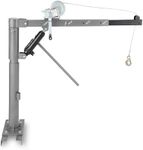Buying Guide for the Best Engine Hoist
Choosing the right engine hoist is crucial for safely and efficiently lifting and moving heavy engines. The right hoist will depend on the weight of the engines you plan to lift, the space you have available, and how often you will use the hoist. Understanding the key specifications will help you make an informed decision and ensure that the hoist meets your needs.Weight CapacityWeight capacity refers to the maximum weight the hoist can safely lift. This is important because using a hoist with insufficient capacity can be dangerous and cause damage to both the hoist and the engine. Weight capacities are typically segmented into light-duty (up to 1 ton), medium-duty (1-2 tons), and heavy-duty (over 2 tons). Choose a hoist with a capacity that exceeds the weight of the heaviest engine you plan to lift to ensure safety and durability.
Lift RangeLift range is the vertical distance the hoist can lift an engine. This is important for ensuring that the hoist can lift the engine high enough to clear obstacles and be positioned where needed. Lift ranges can vary, with some hoists offering a few feet of lift and others providing much more. Consider the height of your workspace and the height you need to lift the engine to determine the appropriate lift range for your needs.
Construction MaterialThe construction material of the hoist affects its durability and weight. Common materials include steel and aluminum. Steel hoists are generally more durable and can handle heavier loads, but they are also heavier and harder to move. Aluminum hoists are lighter and easier to maneuver but may not be as strong. Choose a material based on the balance between durability and ease of use that suits your needs.
MobilityMobility refers to how easily the hoist can be moved around your workspace. This is important if you need to move the hoist frequently or if you have limited space. Hoists with wheels or casters are easier to move, while fixed hoists are more stable but less mobile. Consider how often you will need to move the hoist and the layout of your workspace when deciding on the level of mobility you need.
FoldabilityFoldability is the ability of the hoist to be folded for storage. This is important if you have limited storage space and need to store the hoist when not in use. Foldable hoists can be compacted to take up less space, making them ideal for smaller workshops or garages. If storage space is a concern, look for a hoist that can be easily folded and stored away.
Hydraulic vs. ManualEngine hoists can be either hydraulic or manual. Hydraulic hoists use a hydraulic pump to lift the engine, making them easier to use and requiring less physical effort. Manual hoists rely on a chain or lever system and require more physical effort to operate. Choose a hydraulic hoist if you prefer ease of use and have frequent lifting tasks, or a manual hoist if you are looking for a more cost-effective option and don't mind the extra effort.
